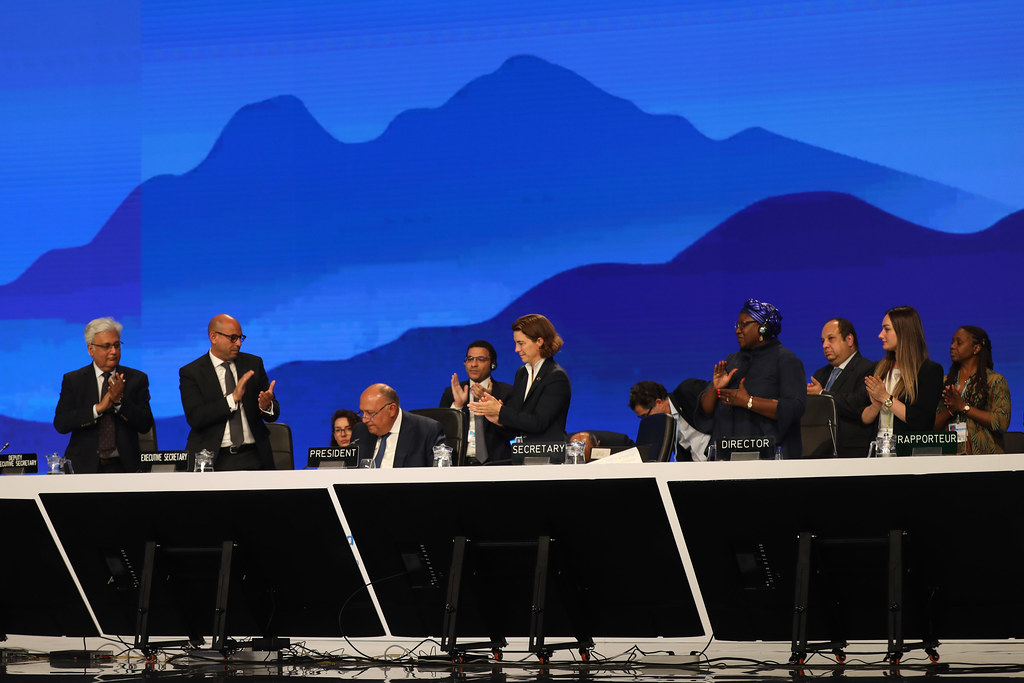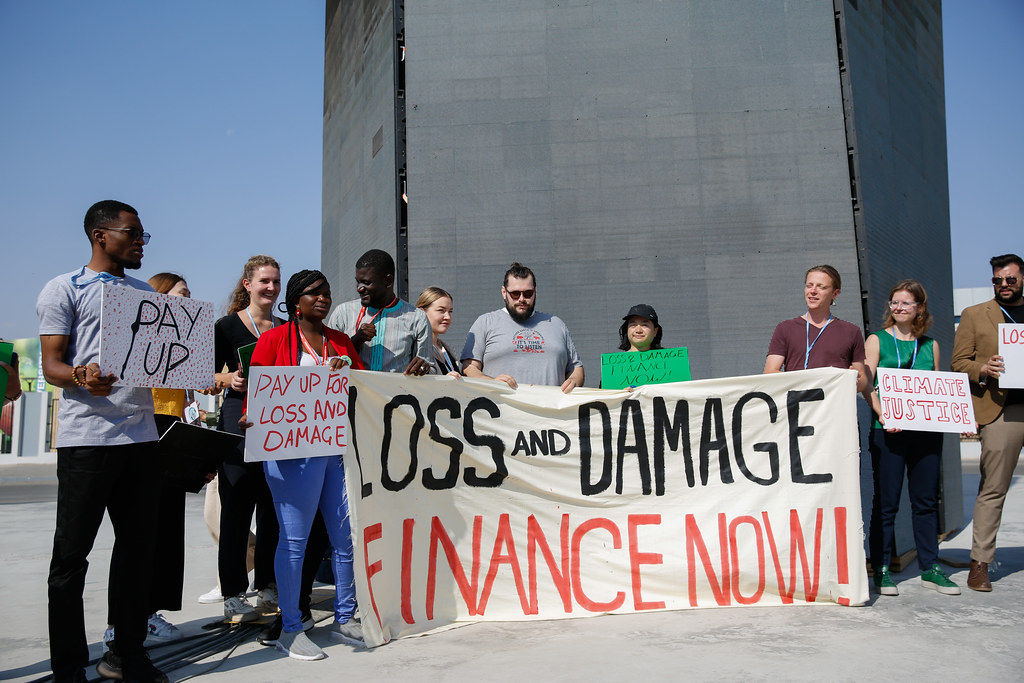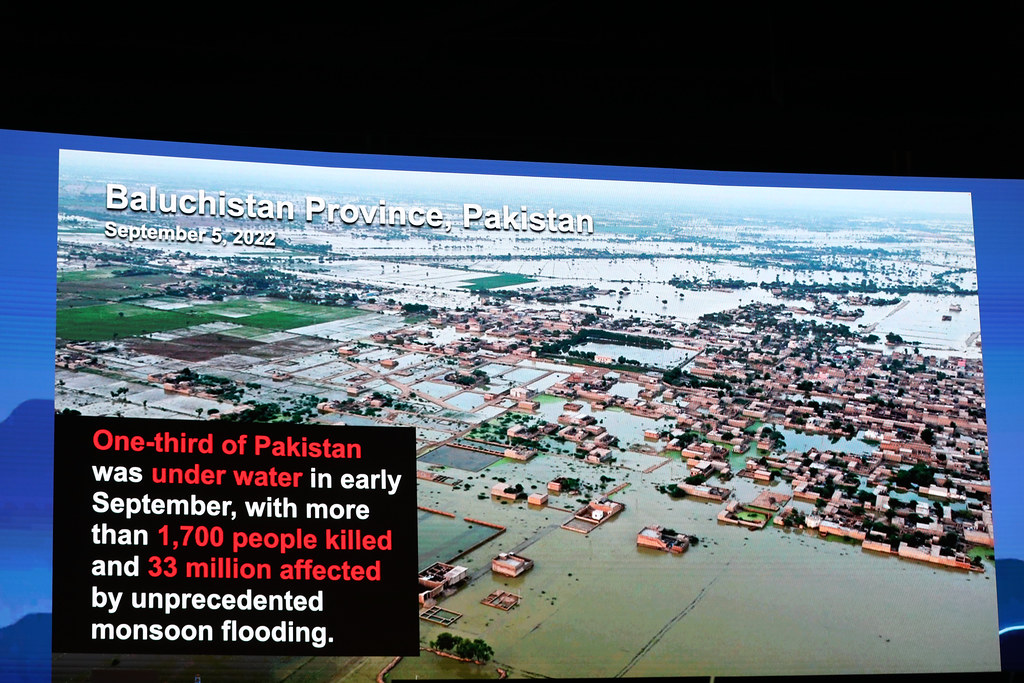Sharm el-Sheikh, Egypt —(Map)
At the COP27* climate meeting in Egypt, nearly 200 countries agreed that rich countries should help poor countries deal with the effects of climate change. That represents progress for developing countries, but the meeting fell short in other areas.
Climate Crisis
Since people first began burning coal to run factories, the world’s temperature has gone up by 1.1 degrees Celsius (C)**. This increase has led to serious long-term changes in weather patterns that affect all life on Earth.
The world is getting hotter, mainly because humans are burning “fossil fuels” like coal, oil, and natural gas to make energy. These fuels give off pollution called “greenhouse gases” or “carbon emissions”, which make the climate emergency worse.
The effects of climate change can already be seen: melting ice in Antarctica and the Arctic, higher temperatures, heat waves, droughts, wildfires, record rains, and more strong hurricanes.
Scientists say the world must take strong action before 2030, and limit global warming to 1.5ºC or below to avoid the worst effects of the climate crisis.

(Source: UNclimatechange, via Flickr.com.)
In 2015, the world’s countries signed the “Paris Agreement” to work together to try to limit global warming to 1.5ºC. Last year, world leaders met at a follow-up meeting, called COP26. This year’s COP27 meeting was expected to focus mainly on how countries would meet the promises they’ve made.
But developing countries had an important goal of their own: to get richer countries to promise to help pay for the “loss and damage” that climate change has caused in their countries. Richer countries are responsible for most of the pollution that caused the climate crisis. But poorer countries are suffering the most from it.

(Source: Kiara Worth, UNclimatechange, via Flickr.com.)
A group of 77 developing countries, known as the G77, pushed hard to get loss and damage discussed. They wanted rich, polluting countries to put money into a “fund” (a collection of money) to help pay for climate-related problems in poorer countries.
Pakistan, which was hit by terrible flooding earlier this year, costing the country more than $33 billion, helped lead the G77. Pakistan’s climate-related problems have gotten much worse, even though the country produces less than 1% of the world’s pollution. Nabeel Munir, who represented Pakistan at COP27 says, “Loss and damage is…about climate justice.”
Near the end of the meeting, the European Union agreed to a loss and damage fund. But the United States, which has created more emissions than any other country in the world, refused.

(Source: Kiara Worth, UNclimatechange, via Flickr.com.)
Though the meeting was meant to end on Friday, the discussions continued. Finally, on Saturday, the US agreed to the idea of a loss and damage fund. But the details of the plan are still fuzzy, and will need to be worked out in the coming year.
Richer countries want to make it clear that paying into the fund doesn’t mean they are admitting they’re responsible for the climate crisis. They don’t want to be taken to court over their past actions.
And even with the agreement, there’s no guarantee that they will pay. In 2009, richer countries agreed to give developing countries $100 billion a year by 2020 to help them adjust to climate change. That money has never been fully paid.

(Source: Kiara Worth, UNclimatechange, via Flickr.com.)
In other areas, COP27 didn’t produce such strong results. Many countries fought for a promise to “phase down” (work toward ending) fossil fuels. But the COP27 agreement doesn’t include phasing down oil and gas. Oil-producing countries fought against the idea.
Though the countries still agreed to try to limit global warming to 1.5ºC, some countries seem close to giving up on that target. Scientists say that if countries keep polluting the way they are now, temperatures will rise by much more than 1.5ºC.
Though COP27 made some progress, climate experts say much stronger action is needed, and it’s needed quickly. As United Nations leader Antonio Guterres said, “Our planet is still in the emergency room”.
Did You Know…?
This was the first COP meeting held in Africa, and Egypt expected to get positive attention for holding the event. But it didn’t quite work out like that. Many people were upset with Egypt, saying the meeting was badly organized. Egypt’s poor record on human rights was also noticed. During the meeting, Egypt limited protests and blocked websites. Experts say Egypt’s official COP27 app had the ability to spy on people at the meeting.
* COP stands for “Conference of the Parties”, which basically means “Meeting of the countries that signed the agreement”. In this case, the agreement is the 1992 United Nations Framework Convention on Climate Change. This was the 27th meeting since the agreement was first signed.
** Climate change temperatures are measured against the time when humans started burning coal for power. This article talks about climate change using Celsius (C). Talking about climate change in Celsius is more common and it makes the changes easier to see and remember.
If you want to think about the temperature changes in Fahrenheit( F), you can use these figures: 1.1°C = 2.0°F, 1.5°C = 2.7°F, 2°C = 3.6°F, 2.7ºC = 4.9ºF.
😕
This map has not been loaded because of your cookie choices. To view the content, you can accept 'Non-necessary' cookies.
